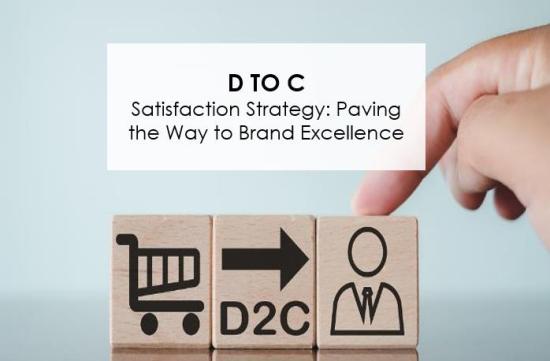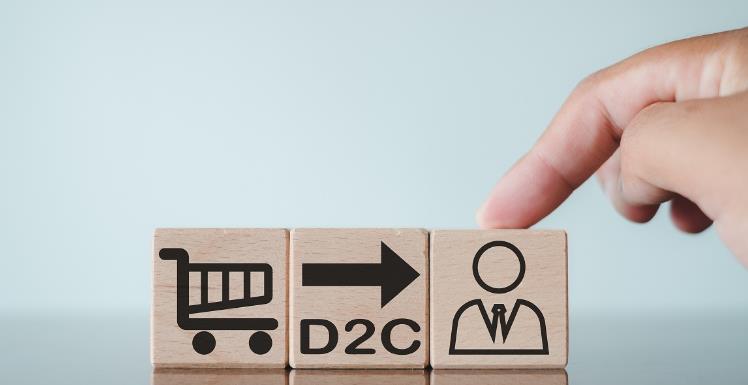Unlocking the Potential of D2C with SEKO BANSARD: In the dynamic landscape of Direct-to-Consumer (D2C) sales, understanding the right fulfillment model is paramount. From internal fulfillment to dropshipping and third-party logistics (3PL), choices impact user experience and operational costs.

Understanding D2C:
Direct-to-Consumer (D2C) is a sales strategy where brands sell products directly to end-users, obtaining in-depth information on consumer preferences. The D2C sales model eliminates the need for a retailer, distributor or wholesaler to assist in the final sales process.In D2C, order fulfillment is crucial, and brands must seek efficient management of inventory, picking, packaging and shipping to deliver an exceptional user experience while keeping costs under control.

Choosing the right fulfillment model:
- Internal Fulfillment: Using internal logistics and resources for order fulfillment guarantees high quality control but entails significant operational and management costs, making it more suitable for mature brands with large volumes of orders from a single location.
- Dropshipping: Fulfilling orders directly from suppliers or manufacturers significantly reduces costs but lacks control over the end-user experience. For small businesses or those selling a single product, dropshipping can be a wise choice in the early stages of business development.

- Third-party fulfillment (3PL): Opting for a third-party logistics provider (3PL) means outsourcing order fulfillment to an international logistics company with a complete infrastructure and experienced professionals. 3PL reduces initial costs for companies, but requires ongoing supervision of order fulfillment. Brands need to carefully evaluate product lines, sales volumes and growth expectations to choose the appropriate D2C fulfillment model. As the company grows, adjustments to the D2C satisfaction model may be necessary. If you choose a 3PL provider, SEKO BANSARD can offer you the expertise of its international teams.
Empowering D2C success with SEKO:
SEKO BANSARD's advanced technology solutions offer robust support to enable brands to build a flexible and responsive supply chain, crucial to meeting changing consumer demands. As a third-party logistics (3PL) partner, SEKO BANSARD is committed to rapidly enhancing your D2C fulfillment capabilities, creating a powerful brand image that sets you apart in the highly competitive D2C marketplace.

Why D2C is in high demand:
Direct-to-Consumer (D2C) is valued for its direct, multi-faceted engagement with consumers compared to traditional models. D2C requires companies to focus on users' consumption behavior, emphasizing consumer lifestyles through data-driven production.
Benefits include:
- Seamless integration of the company's online and offline sales networks.
- Expanded sales channels with dense, strategic deployment.
- Centralized control, eliminating the risks associated with online purchasing.
- Unrivalled support for various forms of online marketing.
- Emphasis on interactive marketing between users, fostering mutually beneficial sales models - a future trend in e-commerce.
Reasons to choose SEKO BANSARD:
D2C brands face multiple order fulfillment challenges, including fluctuating consumer demand and the need to effectively coordinate fulfillment nodes. SEKO responds to these challenges with professional technical solutions, simplifying D2C operations to ensure you're ready to meet the challenges of D2C satisfaction.
- Warehouse Management System (WMS): Software that tracks and organizes warehouse processes and activities, coordinating inventory, picking, packing and shipping to simplify operations, reduce logistics expenses and provide real-time inventory visibility.
- Order Management System (OMS): Centralizes the processing of all orders from sales channels, optimizes shipping routes and transportation choices, and ensures efficient order management.
- Transportation Management System (TMS): Helps find fast, economical transportation methods based on cost, transit time and delivery requirements.
- Inventory Optimization Tools: Efficiently balances inventory in different locations using predictive analytics to avoid the risk of out-of-stocks and overstocks.
- Cloud ERP solutions: Use advanced technologies such as artificial intelligence, cloud computing and big data to integrate inventory management, customer relationship management (CRM) and financial data. Unifies data stored in a central database, achieving seamless integration with various internal and external systems, enhancing cross-departmental and cross-channel collaboration capabilities.
- Reverse Logistics: Tools designed to simplify exchanges, repairs and customer returns. While traditional logistics providers take 18 days to process returns, SEKO can complete the process in 11 days.
For further information, contact us at sales@bansard.com



